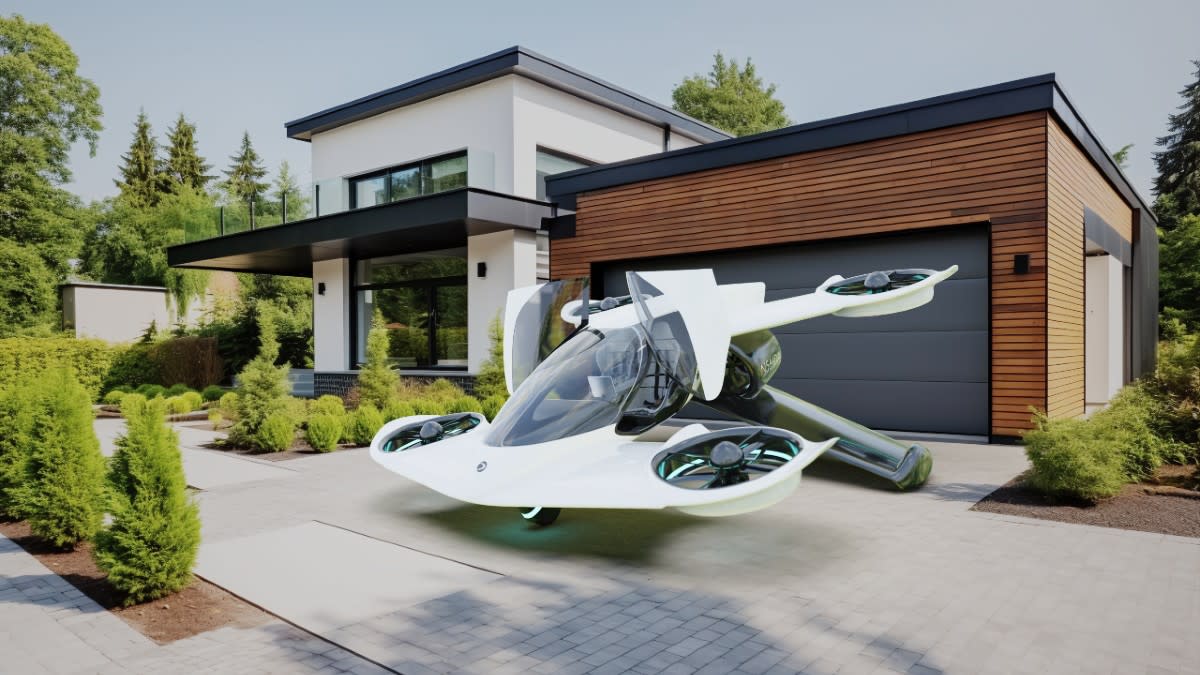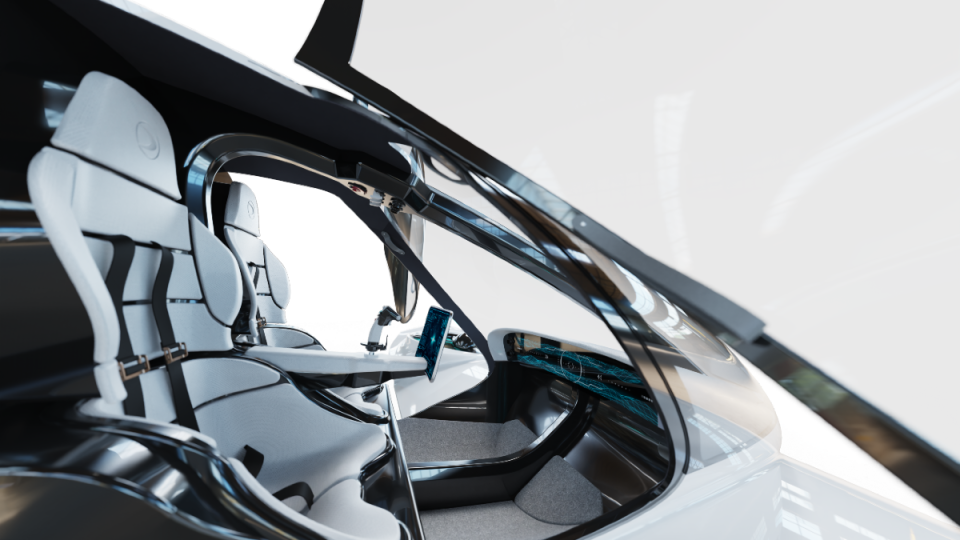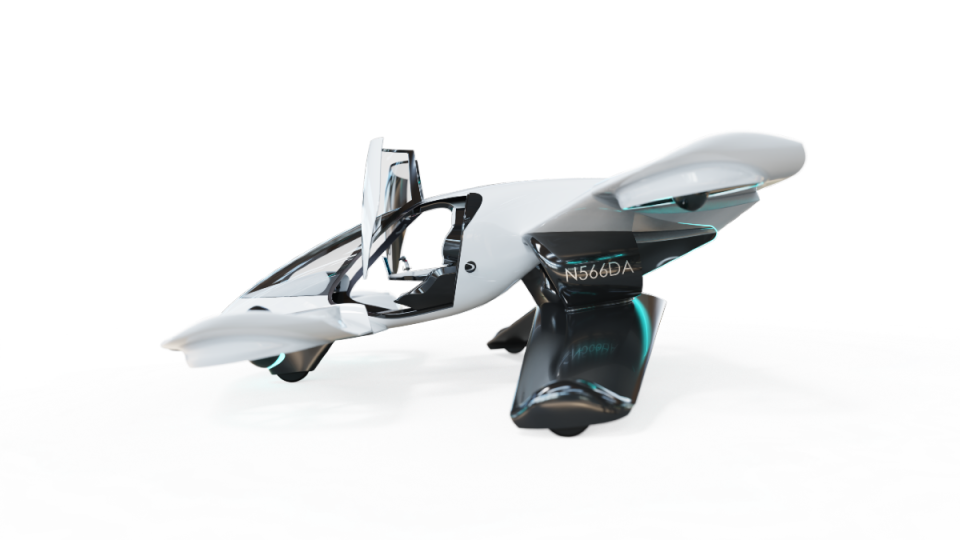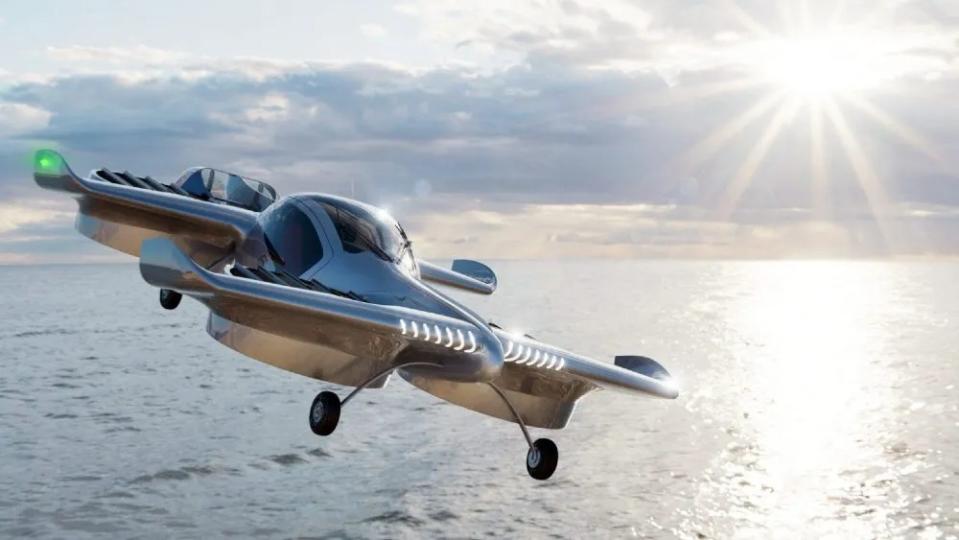This Electric Flying Car Could Take You to Work Next Year—and Then Fit in Your Garage

An electric flying car that looks more like a spaceship from a Terminator movie could be making its first flight by the end of the year. Doroni’s two-seat H1X is currently a full working prototype, with the Miami-based start-up saying it will move into flight testing this year. The first units could reach clients by 2025, if R&D, production, and FAA certification matches Doroni’s schedule.
The H1X is the evolution of Doroni’s H1, which is still being tested but increasingly on the back burner as the new model moves closer to completion. The two eVTOLs share features like four ducted fans that deliver lift and forward propulsion. Each fan is powered by two counterrotating co-axial motors.
More from Robb Report
NASA and Archer Aviation Team Up on a High-Performance Battery Pack for an Electric Air Taxi
Flying Cars Are All the Rage at CES, and This Transformers-Style eVTOL Is Leading the Way
But that’s largely where the similarities end. “We redesigned the entire airframe for improved aerodynamics,” CEO Doron Merdinger tells Robb Report. “We felt we had to come up with a design that maximized speed and range, while also fitting in a two-car garage.”

The H1X is aiming for FAA certification as an ultralight aircraft, so it will be able to fly in urban areas. But Doroni and other electric air taxi makers are working with the FAA on exactly how it will be certified since there is no existing eVTOL certification. The company sees the H1X as an eVTOL that will replace cars or trains for commuters. “My goal is not to increase the number of roads in this country by pushing urban air mobility,” he said.
The H1X will be controlled by joystick and semi-autonomous for easier flying. It will require some sort of license, says Merdinger, though not a conventional pilot’s license. “Some of new electric aircraft require 20 hours of flight, but we believe this vehicle won’t even need that since it’s pretty simple to control,” he says.

The H1X is designed with anti-collision sensors, barometer, LIDAR, and optic-flow cameras for situational position and safety. Multiple fans add a level of redundancy if one system fails, and there will be a ballistic parachute for a total failure. The designers are aiming for a top speed of 120 mph, with a 60-mile range and 40-minute flight capability. The aircraft will be built of carbon-fiber, with a large windshield for enhanced views.
The name “flying car” is a misnomer, since its landing gear and wheels will be used to go to and from the garage, rather than driving on a street or highway like most of its competitors. “The idea is to fly from place to place but, not be stationary like a helicopter when you’ve landed,” says Merdinger.

Plans are to sell six units in 2025, eventually increasing production to seven units per day. It will be priced between $300,000 and $400,000. Doroni has 450 pre-orders, according to Merdinger.
The company has raised $6 million in crowdsource funding, a seemingly small amount to build a working flying car and production facility. More financing is expected as the vehicle advances. “Right now, we can fly it inside the facility, but soon we’ll be doing flight tests in another part of Florida,” he says. After that, it could possibly be seen buzzing the skies of Miami.
Best of Robb Report
Sign up for Robb Report's Newsletter. For the latest news, follow us on Facebook, Twitter, and Instagram.

